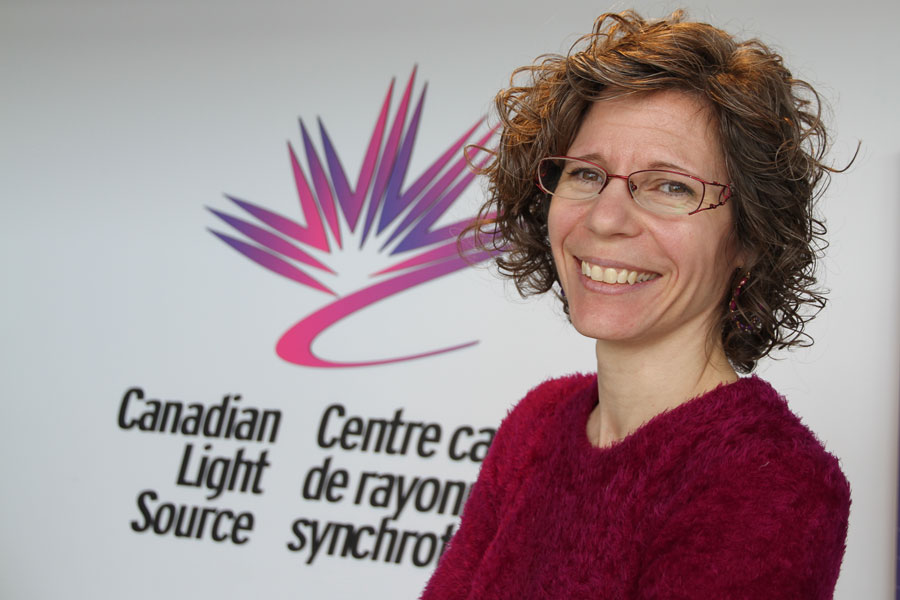Art, plants and big science
Somewhere out there is an art curator with a painting that is a bit of a mystery. The curator knows there are layers of paint on the canvas but cannot know what lies beneath. A portrait? A landscape? By the same artist, or another? A restoration, or a forgery? Unfortunately, to answer the questions using conventional techniques could damage the painting.
By Colleen MacPherson But this summer, curators and others interested in art, art history and cultural heritage have the opportunity to bring big science to bear of their mystery objects or questions. The Canadian Light Source (CLS) is once again opening its facility in July for one-week summer schools, giving researchers the chance to learn how synchrotron technology can be used to build knowledge, and solve mysteries, in their discipline. "If you're interested in synchrotron science," said Tracy Walker, "come and play."
But this summer, curators and others interested in art, art history and cultural heritage have the opportunity to bring big science to bear of their mystery objects or questions. The Canadian Light Source (CLS) is once again opening its facility in July for one-week summer schools, giving researchers the chance to learn how synchrotron technology can be used to build knowledge, and solve mysteries, in their discipline. "If you're interested in synchrotron science," said Tracy Walker, "come and play."
Walker, the CLS education and outreach co-ordinator, said the summer schools, which have run almost every year since 2006, include an introduction to the capabilities of the facility, hands-on beamline time and access to scientists to help gather and interpret data.
"From a learning perspective, it's very important to us to provide practical experience as well as the science behind the synchrotron," said Walker. "The third component of the school experience is networking with the experts."
This year, two schools will run concurrently—one for those studying the structure and molecular composition of plants and plant-related products, and one for people who want to further their research in the fields of art and cultural heritage. This could include studying ancient production methods, paints and dyes, learning how to identify forgeries, or studying nutrition, migration and toxicology in the field of anthropology.
Each school has a maximum enrolment of 10 people who submit an application explaining their research. Spots are available for experts and researchers as well as students from Canadian universities.
The participants are what Walker termed novice users, people with no synchrotron experience. "And those who are accepted are invited to bring their own sample," Walker said, "an artifact, a fossil, a piece from a museum collection, a piece they're trying to understand something about. The huge advantage here is that our techniques are non-destructive."
Returning to the painting example, Walker explained that instead of having to remove layers of paint to see what is underneath and thus destroy a piece of art, synchrotron technology can identify the chemical signature of various pigments, and then map the location of those signatures to reveal what is beneath the top layer.
Offering summer schools is "very much a facility commitment," she continued. Time has been booked on six beamlines for the schools, including the new BioXAS (x-ray absorption spectroscopy), which is nearing completion. Staff will be working with school participants, as will scientists and current beamline users. International speakers will be giving presentations and there will be an excursion to Wanuskewin.
"In addition to giving novice users a new toolkit they can use in their work, we are able to show what the beamlines are capable of and at the same time build a beamline community," she said.
Detailed information about the July 20-25 summer schools is available on the Canadian Light Source website.

